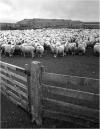Tierra del fuego (Chile) and the extreme cultural landscape
##plugins.themes.bootstrap3.article.details##
Abstract
This paper analyzes the application of the concept of extreme cultural landscape to the island of Tierra del Fuego(Chile). The analytical perspective is based on the concept of cultural landscape, complemented by the notion ofpalimpsest, to which is added the notion of extreme for the case of Tierra del Fuego. For these purposes, its extremenatural landscapes are presented; the navigators, travelers and scientists who explored the island and whose testimonialsform a corpus of narratives and maps, are mentioned; the aboriginal culture of the Selknam, that settledthe island from 11,000 years BC, are described; and the economic colonization, based on the exploitation of naturalresources of the island, is analyzed. In Tierra del Fuego, the works of man and nature have been combined, illustratingthe different ways in which man occupied this territory and altered its geography and climate with productivepurposes, forming extreme cultural landscapes. From these issues arise the management questions and specificchallenges that this territory generates. In order to approach them, at least partially, an applied research in relationshipwith the design of cultural routes for Tierra del Fuego is being developed.
Keywords
Tierra del Fuego, extreme cultural landscapes, palimpsesto, occupation of the territory, Key word plus, Cultural heritage, palimpsestos, manuscripts (palimpsests).Tierra del Fuego, paisajes culturales extremos, palimpsesto, ocupación del territorio. - Descriptores, Tierra del Fuego (Isla, Chile), Tierra del fuego (Chile, Island), Paisaje cultural.
References
How to Cite
Garcés Feliú, E. (2009). Tierra del fuego (Chile) and the extreme cultural landscape. Apuntes: Revista De Estudios Sobre Patrimonio Cultural, 22(1). Retrieved from https://revistas.javeriana.edu.co/index.php/revApuntesArq/article/view/8949
Section
Artículos


